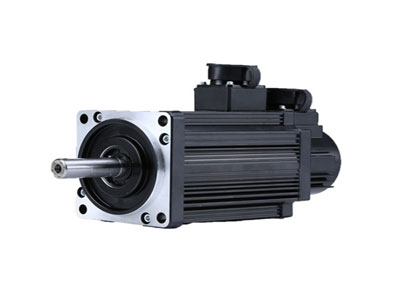Key Takeaway
To troubleshoot a servo motor, start by checking all electrical connections for looseness or corrosion, as these issues can cause power loss. Ensure everything is securely connected.
Next, check for overheating. Ensure the motor’s cooling system is functioning, and clear any blockages that may be restricting airflow. Look for mechanical problems such as worn bearings or misaligned shafts, which can cause performance issues. Also, review the motor’s controller settings to ensure they match your application. If the motor is under heavy load, reducing it might resolve performance issues. Regular maintenance and inspections will help prevent most troubleshooting needs.
Common Problems in Servo Motors
Servo motors can experience various issues over time, and recognizing the most common ones can save you time in troubleshooting. One frequent issue is overheating, which often occurs when the motor is running under excessive load or in a poorly ventilated area. Overheating can damage internal components and lead to inefficient performance. Another problem is electrical noise, caused by faulty connections or interference in the signal lines, which can cause erratic motor behavior.
Mechanical wear, such as worn bearings or misaligned shafts, is another common culprit. These can result in unusual sounds or vibrations during operation, which are clear indicators that something’s wrong. Feedback issues, often related to encoders or resolvers, can lead to inaccurate positioning or motor drift. Identifying these common problems is the first step toward effective troubleshooting.

Step-by-Step Troubleshooting Guide
When it comes to troubleshooting a servo motor, having a systematic approach can make all the difference. Start by visually inspecting the motor for any obvious signs of damage. Look for loose wires, debris, or signs of overheating. Next, check the electrical connections to ensure they are secure and free from corrosion, as poor connections can cause inconsistent performance.
Once the visual checks are complete, turn to the motor’s operational parameters. Use a multimeter to measure the voltage and current. If the readings are outside the motor’s specified range, you may be dealing with an electrical issue. Check for any unusual noises during operation, such as grinding or squealing, which could point to mechanical wear. By systematically going through these steps, you can isolate the problem quickly and determine the appropriate fix.
Diagnosing Mechanical vs Electrical Issues
One of the most important aspects of troubleshooting a servo motor is determining whether the problem is mechanical or electrical. Electrical issues often manifest through inconsistent performance, power fluctuations, or overheating. If your motor is experiencing erratic behavior, such as sudden stops or speed variations, the root cause is likely electrical. Use diagnostic tools like multimeters to measure voltage, current, and resistance, which can help pinpoint any electrical faults.
Mechanical issues, on the other hand, are usually indicated by physical signs such as noise or vibration. If you hear grinding or notice excessive heat, it could be due to worn-out bearings, misaligned shafts, or insufficient lubrication. Addressing mechanical issues often involves more hands-on inspection, such as disassembling the motor to check its internal components. Knowing how to differentiate between these two types of issues will make troubleshooting more efficient.
Tools for Effective Servo Troubleshooting
Having the right tools at your disposal is essential for effective servo motor troubleshooting. A multimeter is your go-to tool for checking electrical properties such as voltage, current, and resistance. These measurements can help identify whether an electrical issue is causing the motor to malfunction. An insulation resistance tester is also useful, especially for detecting electrical shorts or insulation breakdowns that could lead to motor failure.
For diagnosing mechanical problems, tools like torque wrenches and dial indicators are essential. A torque wrench ensures that motor components are properly tightened during assembly, while a dial indicator helps you check for shaft misalignment. A stethoscope-like device can be used to detect abnormal noises, such as grinding, which often indicate bearing wear or rotor misalignment. With the right tools in hand, troubleshooting becomes much more manageable and accurate.
When to Call a Professional for Servo Repair
While many troubleshooting steps can be handled in-house, there are times when calling a professional is the best course of action. If the issue is complex—such as a feedback system malfunction involving encoders or resolvers—it may be beyond the scope of routine maintenance. Improper handling of these components can lead to further damage, especially if precise alignment is required.
Additionally, if your motor has been in service for a long time and is showing signs of severe wear, it might be more economical and safer to have a professional technician assess it. Problems like damaged windings or severe electrical faults are best left to experts who have the necessary tools and expertise. Knowing when to call in a professional ensures that you avoid further damage and keep your production line running smoothly.
Conclusion
Troubleshooting a servo motor doesn’t have to be overwhelming. By understanding the common problems, using a systematic approach, and having the right tools, you can often resolve issues quickly and efficiently. However, for more complex problems, knowing when to call a professional is just as important. With proper care and timely troubleshooting, you can minimize downtime and ensure that your servo motor continues to perform at its best for the long term.
